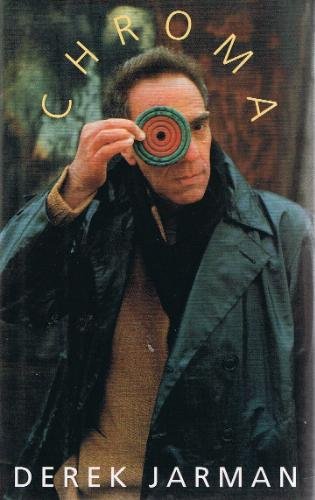Paul Sharits, Józef Robakowski: Attention: Light!, catalogue (2004)
Filed under catalogue | Tags: · art, experimental film, film, light, structural film

“In the early 1980s, American artist Paul Sharits sent Józef Robakowski plans for a film entitled Attention: Light with the suggestion that Robakowski produce it in Poland. The film was to be a visual rendition of the Mazurka in F minor, Op. 68#4 by Frederick Chopin. Unfortunately, due to unmitigated circumstances including the imposition of martial law in Poland, Robakowski was unable to fulfill Sharits’ wish.
This unique project was eventually realised in 2004 and was the highlight of the program Attention: Light! held at the University at Buffalo’s Center for the Arts, and which featured works by Paul Sharits (T,O,U,C,H,I,N,G; Piece Mandala/End War; Word Movie-Flux Film 39; Tails) and Józef Robakowski (Test 1; Proba II/An Attempt II; 1,2,3,4…; Impulsatory/Impulsators; Video Piesni/Video Songs; Katy Energetyczne/The Energy Angles).
A black and white booklet, published in conjunction with the screening, features forwards by Edmund Cardoni (Hallwalls Executive Director) and Fritzie Brown (CEC ArtsLink Executive Director), essays by Joanna Raczynska (“Four Short Films by Paul Sharits”), Lukasz Ronduda (“Attention: Light!: Józef Robakowski’s Light Based Films and Video Works”), Józef Robakowski (“‘Art’ Friend-A Memoir”), Wieslaw Michalak (“Attention: Light! Technical Description”), and a coda by Malgorzata Potocka. The catalogue also features photos, film scores, and film stills.
Attention: Light was curated by CEC Arts Link curator in residence Lukasz Ronduda, and by Joanna Raczynska, Hallwalls Media Arts Director.”
Edited by Łukasz Ronduda
Publisher Hallwalls, Buffalo, NY, 2004
Design Marianka Dobkowska and Krzysiek Bielecki
ISBN 8388277634
44 pages
Derek Jarman: Chroma: A Book of Color (1995)
Filed under book | Tags: · alchemy, art, colour, film, light

“Chroma is a meditation on the color spectrum by the celebrated late artist and filmmaker Derek Jarman. From the explosions of image and color in In The Shadow of the Sun, The Last of England, The Garden and Wittgenstein, to the somber blacks of his collages and tar paintings, Jarman has consistently used color in unprecedented ways, making his ideas on the subject of interest to filmmakers, film audiences, artists and students alike. Blue, his most personal and innovative film, consists of a compelling soundtrack accompanied by a monochrome blue image and is, among other things, a comment on Jarman’s diminishing eyesight due to AIDS. In his signature style, a lyrical combination of classical theory, anecdote, and poetry, Jarman takes the reader through the spectrum, introducing each color as an embodiment of an emotion, evoking memories or dreams. He explains the use of color in Medieval painting through the Renaissance to the modernists and draws on the great color theorists from Pliny to Leonardo. He writes too about the meanings of color in literature, science, philosophy, psychology, religion and alchemy. Read either as a work on color, or a distillation of Jarman’s artistic vision, Chroma presents an exciting perspective on the subject.”
Publisher Overlook Press, Woodstock, New York, 1995
ISBN 0879515740, 978-0879515744
151 pages
PDF (English, updated on 2018-1-30)
PDF (Russian)
Michael B. Schiffer: Power Struggles: Scientific Authority and the Creation of Practical Electricity Before Edison (2008)
Filed under book | Tags: · 1800s, electricity, electromagnetism, history of technology, light, technology

In 1882, Thomas Edison and his Edison Electric Light Company unveiled the first large-scale electrical system in the world to light a stretch of offices in a city. This was a monumental achievement, but it was not the beginning of the electrical age. The first electric generators were built in the 1830s, the earliest commercial lighting systems before 1860, and the first commercial application of generator-powered lights (in lighthouses) in the early 1860s. In Power Struggles, Michael Brian Schiffer examines some of these earlier efforts (both successful and unsuccessful) that paved the way for Edison.
After laying out a unified theoretical framework for understanding technological change, Schiffer presents a series of fascinating case studies of pre-Edison electrical technologies, including Volta’s electrochemical battery, Thomas Davenport’s electric motor, the first mechanical generators, Morse’s telegraph, the Atlantic cable, and the lighting of the dome of the U.S. Capitol. Schiffer discusses claims of “practicality” and “impracticality” (sometimes hotly contested) made for these technologies, and examines the central role of the scientific authority—in particular, the activities of Joseph Henry, mid-nineteenth-century America’s foremost scientist—in determining the fate of particular technologies.
These emerging electrical technologies formed the foundation of the modern industrial world. Schiffer shows how and why they became commercial products in the context of an evolving corporate capitalism in which conflicting judgments of practicality sometimes turned into power struggles.
Publisher MIT Press, 2008
Lemelson Center Studies in Invention and Innovation Series
ISBN 0262195828, 9780262195829
420 pages

